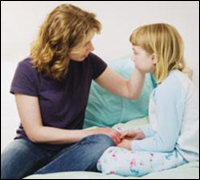
Childhood urinary incontinence can be caused by an underlying disease process (organic incontinence), or can have no associated abnormality (functional incontinence). Incontinence is uncontrollable leakage of urine or “accidents” or “leaks”. Nighttime bedwetting or sleep wetting is called enuresis. Nighttime bedwetting is more common than day wetting. Children with nighttime incontinence issues should see their doctor to assess them for bladder capacity, an immature nervous system, anxiety disorders, genetic predisposition, sleep apnea, or structural problems. Daytime incontinence can be related to or caused by an overactive bladder, infrequent voiding, small bladder capacity, structural problems, pressure from hard stools from constipation, consumption of bladder irritants, and the inability to control their pelvic floor muscles or weak pelvic floor muscles. Overstrenuous toilet training can result in children being unable to relax their pelvic floor and sphincter muscles to properly empty their bladder. This may result in being unable to fully empty their bladder when they do have the proper urge and use the toilet. Voiding frequency in children is relevant from age 5 or attainment of bladder control. Physical therapy treatment for pediatric incontinence therefore begins at age 5 and up.
How can Pamela Morrison Physical Therapy, P.C. help children with incontinence?
Physical therapy for pediatric incontinence might include scheduled bladder retraining, behavioral modification, pelvic floor muscle re-education, surface electromyography biofeedback (external electrodes or “stickers”), and prescriptive therapeutic exercises. Medical research has shown that proper pelvic floor muscle training and biofeedback drastically improves voiding dysfunctions in children. Treatment at Pamela Morrison Physical Therapy, PC is geared towards being educational and fun. Parents’ participation is crucial to the success of treatment.


